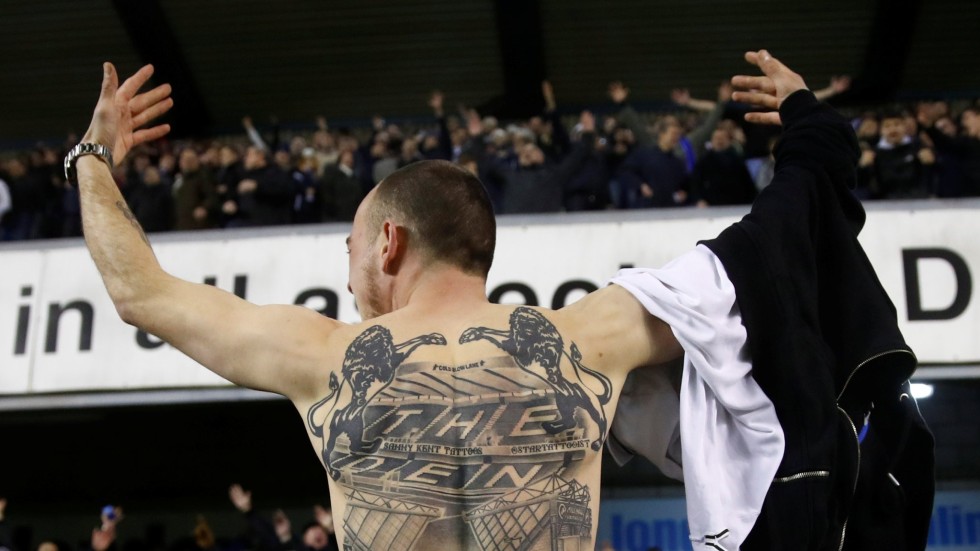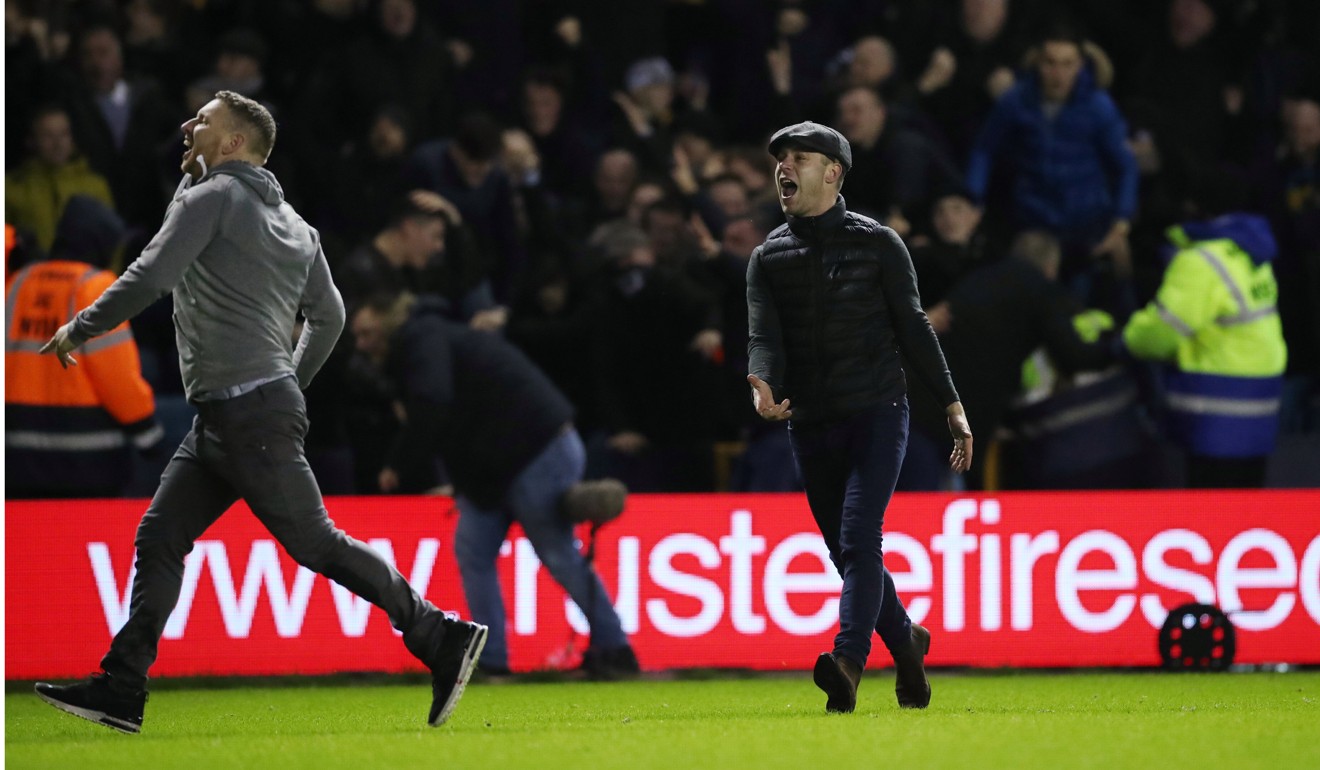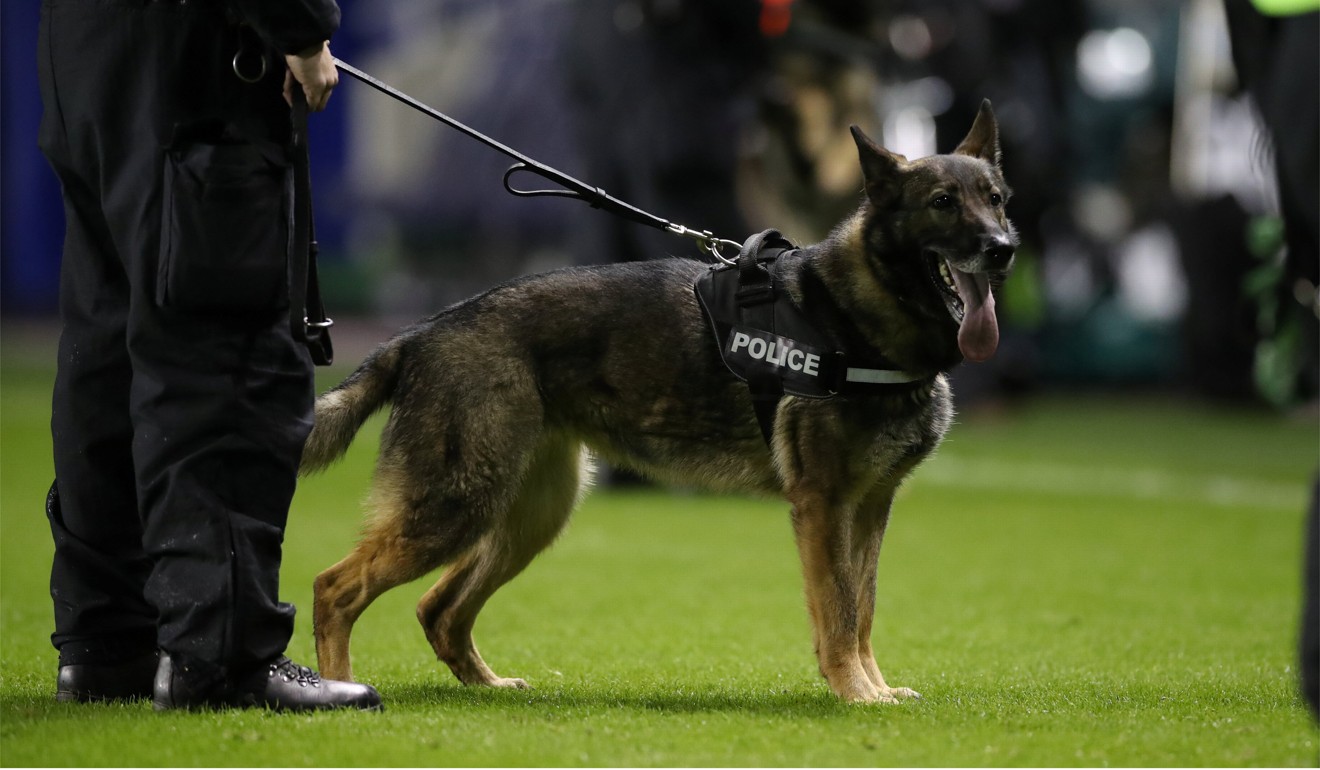
Footage of Everton and Millwall fans fighting before Saturday’s FA Cup fourth-round match in southeast London went quickly viral. Two Everton fans were slashed and both clubs have condemned the trouble, but what could they do when it happened away from the stadium among two groups who wanted trouble and found it, despite the police trying to keep them apart?
These weren’t balloons of England fans throwing bikes into an Amsterdam canal, but lads – “lad” being the usual term hooligans use for themselves – in black and no club colours, with their faces covered, who knew what they were doing.
Millwall’s stadium, The Den, is only a mile across the River Thames from the luxury towers and penthouses of Canary Wharf – but The Den’s environs of rail underpasses, housing estates and a power station make for an intimidating place for away fans.
Millwall v Everton: Police say football violence "worst for some time" pic.twitter.com/ezJSmGMype
— CGTN (@CGTNOfficial) 29 January 2019
Most Millwall fans abhor violence, but their “no-one likes us, we don’t care” moniker has long rung true in the predominantly white, working-class area from where they draw their fans. Trouble with Millwall fans is rare, but it’s far from isolated.
Despite the best efforts of their club to change it and the excellent work of the Millwall For All trust, the name Millwall has long evoked hooligan connotations and there will always be a voyeurism around football hooliganism that extends well beyond the hooligans themselves. There are millions who want to see the scenes that “nobody wants to see”.
Hooliganism sells, with witness videos on mainstream news sites which get watched millions of times. For those with a deeper interest, there’s a slew of “hoolifan” literature – books where British football firms give nostalgic accounts of their actions, which rarely saw them lose a fight. They mostly sold in large numbers – when they weren’t being shoplifted. A book on Manchester’s City’s “Guvnors” was the most shoplifted in Manchester.
And now there’s video. Everyone is a potential cameraman and footage is rife of any incident.
Fifa World Cup hooligan ‘carnage’ fears pleasantly prove false for Hong Kong football fans in Russia
'We will bring them to justice': Police chief vows to bring brawling Millwall and Everton football fans to justice https://t.co/jlERDDyX9Q pic.twitter.com/225CkMkHvd
— ITV News (@itvnews) 28 January 2019
Video clips are posted from anonymous aggregator accounts on Twitter using language like, “Everton and Millwall fans going at it” or “Millwall and Everton having it off”.
This is good for hooligan voyeurs, less so for hooligans for there’s incriminating evidence aplenty. Facebook is known as “grassbook” among some former Manchester United hooligans. I say former because football hooliganism has died down.
It has never completely gone away and never will. There will always be predominantly young, English men who like to fight, who like the adrenaline rush it gives them.
And even if they don’t fight, they like the accoutrements, the tribalism, the buzz that comes with fighting and the danger that comes with stepping off a train in an alien town as representatives of your team as locals goggle at you.
You’re with your mates, you have your identity, your fashions, your loyalty. Most lads never throw a punch, to them it’s a way of following their team which is more interesting than talking to Mike in accounts about a spreadsheet.
#Millwall will be away to @AFCWimbledon in the @EmiratesFACup Fifth Round.
Ties to be played across the weekend of Friday 15th-Monday 18th February. pic.twitter.com/b1kseZnp1C— Millwall FC (@MillwallFC) 28 January 2019
Hooliganism died down for many reasons, not least more sophisticated policing and harsher penalties.
United had a very active firm in the early noughties. Not now, the price to pay is too high.
In 2015, seven Liverpool fans appeared at the front of a section of United fans at Old Trafford during a Europa League game and unfurled a banner. Liverpool fans below applauded them – and their bravery/stupidity – while several outraged United fans in the section began attacking the Liverpool fans.
Punches were thrown by people a judge described as otherwise “intelligent hard-working men with respectable jobs”. Five Liverpool fans and four United fans were jailed for between six and 10 months. They were also banned from attending any professional football matches, most for six years. Banning orders are widely used. Was it worth it for something that was over in a minute?
Ole Gunnar Solskjaer is trying to bring back ‘the real Manchester United’ says Jordi Cruyff

The concept of hooliganism can be utterly alien to those outside the Angry Island of England, Wales and Scotland.
In July, American fans of Manchester United and Liverpool filled the main street in Ann Arbor, Michigan the night before a friendly watched by a vast crowd of 100,000. Fans drank in the same bar with almost no incident. They even sang offensive songs at each other as if “you Scouse b*******” and “Manchester is full of s***” were innocent nursery rhymes. Hundreds of rival fans hollered at each other in a sing off, with no police nearby.
Maybe the impact was lessened because they weren’t Scousers or Mancunians, but, despite alcohol being drunk, there was no trouble.
Ole Gunnar Solskjaer welcomes Alex Ferguson back into Manchester United family made by Matt Busby

This would be unheard of in England. Liverpool and United, despite having so much in common, are like oil and water. Someone would throw a bottle or a punch and that would spark a fight.
It needs someone to react.
On Friday night, I walked behind a group of Manchester United fans at the Emirates Stadium as they sang songs goading Arsenal fans about past games between two clubs.
The United fans were intoxicated and, to a neutral eye, obnoxious, but they didn’t get a reaction from some of the tamest fans in football.
Millwall is different from Arsenal, but whatever the glorification of hooliganism, innocent bystanders get caught up in the trouble.
Every English club has a hooligan element, even if they’re not active. If violence does break out, they’ll defend their actions on the basis of historical enmity or perceived slights.

The other side are usually “scum”, but such accusations mask a truth: they actually enjoy it. I’ve seen men deeply satisfied after a sustained fight between Manchester United and Galatasaray in 1993 in Istanbul.
Though I wasn’t present when United fans attacked Roma’s ultras in Rome in 2007, they enjoyed that too, talk of it as being the perfect buzz. If being attacked with a pair of ladders is your thing, no doubt it was.
They still talk about it, just as Everton and Millwall fans will talk about Saturday and a million hooligan junkies will watch their latest instalment of hoolie porn.
There’s always a new generation, guided by tales from those they look up to who, in most cases, long ago saw the error of their ways, but are happy to see others take their place.
Football hooliganism in Hong Kong? Filipino fans claim racial abuse







